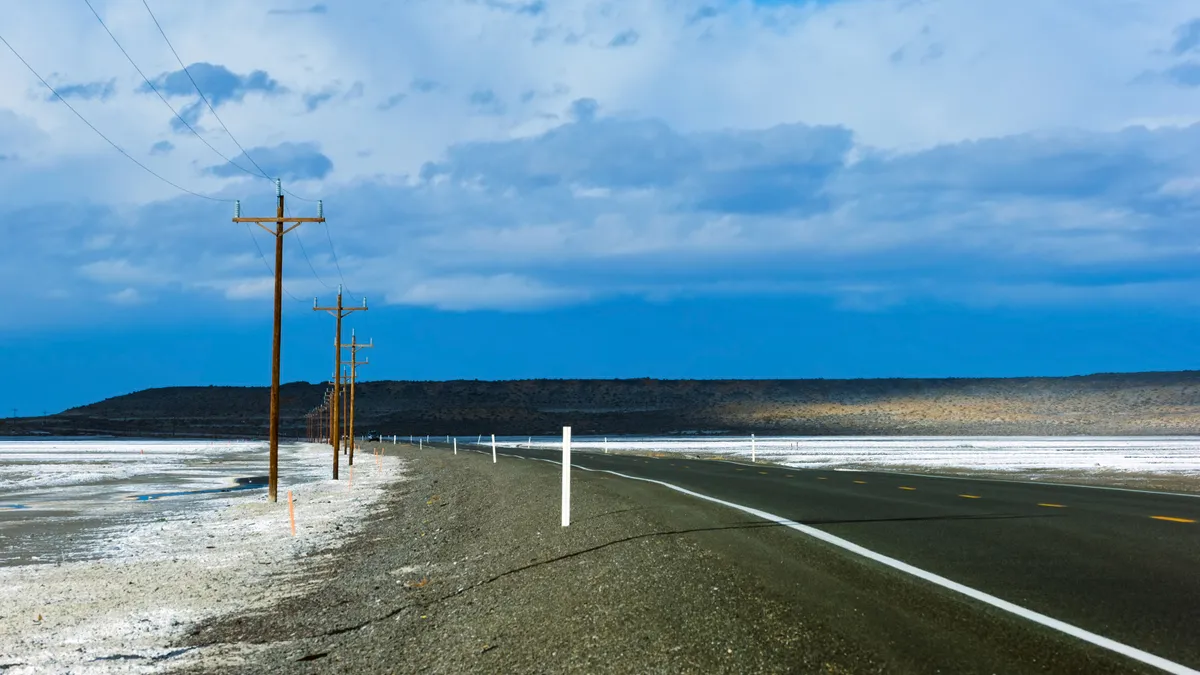Jose Zayas is the American Council on Renewable Energy’s executive vice president, policy and programs.
The year is 1954. Ignoring the benefits of the autobahn network he experienced serving in Europe during World War II, President and former five-star Army General Dwight Eisenhower maintains the status quo by not passing a new federal-aid highway act. While Europe recovers and reasserts its global leadership, U.S. commerce slowly crawls along as the contiguous states remain loosely connected.
Luckily, that did not happen. Eisenhower determined that a historic investment in a carefully planned cross-country highway network could save American lives, deliver significant economic benefits, and enhance national security.
Now is the time for federal policymakers to make a similar commitment to the nation’s electricity grid.
Without the interstate highway system, U.S. GDP would decline by upwards of $578 billion, according to the National Bureau of Economic Research. Like our interstate system, enacting sound policies that deliver a 21st century grid and spur interregional transmission development will drive tremendous economic benefits, increase resilience and national security operations, and maximize the ability to deliver affordable and reliable energy when we need it most.
Given the nation’s aging grid infrastructure and our growing need for energy, there is no time to waste. More than 70% of the nation’s transmission and power transformers are over 25 years old and, in many cases, have exceeded their original design life. Additionally, the system must expand 60% by 2030 and triple in size by mid-century to accommodate projected U.S. energy demand. And experts have warned that the existing system is inadequate to meet the nation’s needs in the modern threat environment.
To quote Eisenhower, the nation is “confronted with inescapable evidence that action, comprehensive and quick and forward-looking, is needed.”
Studies have also shown the importance of modernizing and expanding the U.S. transmission network with high-voltage direct current, or HVDC, transmission lines. HVDC transmission lines can improve the efficiency of existing alternating current grids by better controlling power flows, improving resiliency, and addressing challenges to system flexibility, according to a recent report from The Brattle Group and DNV.
We are being outpaced by other nations across the globe in investing in these types of technologies. As an example, European grid operators alone have deployed about 50 GW of advanced HVDC technology and have planned another 130 GW over the next 10 years. Today, North America accounts for only 3% of all advanced HVDC systems in operation worldwide, according to Brattle and DNV.
Due to rising European demand, the supply chain for key grid components is also becoming increasingly constrained. Lead times for HVDC converter stations have increased to seven years. American companies are waiting three to four years for large power transformers. In fact, such delays have forced some rural cooperatives to delay or defer projects, the Financial Times reported.
There are only three main Western converter vendors and original equipment manufacturers for HVDC converter equipment, and many of their supply chains are constrained due to large-scale projects in Europe. European demand for power cables has secured almost all the European cable vendors’ available capacity, pushing delivery dates for new HVDC converter and cable orders into the early 2030s.
Several European grid operators have used HVDC lines to connect their offshore wind facilities and are now aiming to use the technology to meet future grid needs. In collaboration with their local governments, many of these grid operators have established clear long-term commitments for both onshore and offshore HVDC systems.
Promoting a domestic agenda
U.S. officials must work with domestic developers to address the supply chain challenges that will otherwise plague grid modernization efforts for years to come.
There are a few recent examples of state governments requiring HVDC technologies, although additional efforts are certainly needed. New York and New Jersey required that the transmission facilities used to connect offshore wind generation to the onshore system use HVDC technology, given its smaller environmental and community impact as well as its greater transmission capacity compared with traditional lines.
Additionally, the Midwestern grid operator is considering HVDC as a transmission solution in the Tranche 2 portfolio within its long-range transmission planning process but has not yet enhanced its tools and processes to integrate such solutions, according to Brattle and DNV.
Greater coordination between grid operators on expanding interregional transmission capacity with HVDC technologies would help advance equipment procurement, spurring the growth of domestic grid component manufacturing.
In the short term, government officials can develop policies to stimulate technology demand and offer tax incentives to domestic manufacturers to help foster the development of American-produced critical grid components. Doing so would alleviate the nation’s reliance on foreign supply chains while boosting the creation of good-paying jobs within our shores.
Perhaps equally important, the time has come again for our federal leaders to recognize the valuable infrastructure investments our European counterparts are prioritizing and begin taking similar steps.
The Federal Energy Regulatory Commission must finalize a strong regional transmission planning rule and take up further consideration of an interregional transfer capacity standard. The U.S. Department of Energy should also finalize its process for designating National Interest Electric Transmission Corridors. And Congress needs to pass an investment tax credit to spur new long-distance lines.
Given the long lead times for planning and permitting transmission, there is no time to waste. As Ike said, “To correct these deficiencies is an obligation of government at every level.”






















